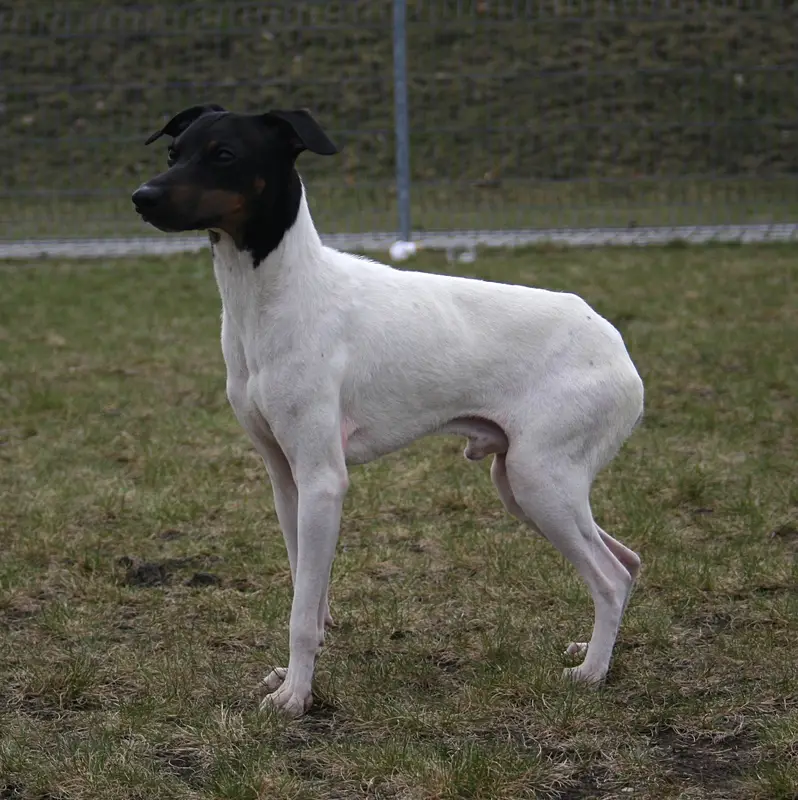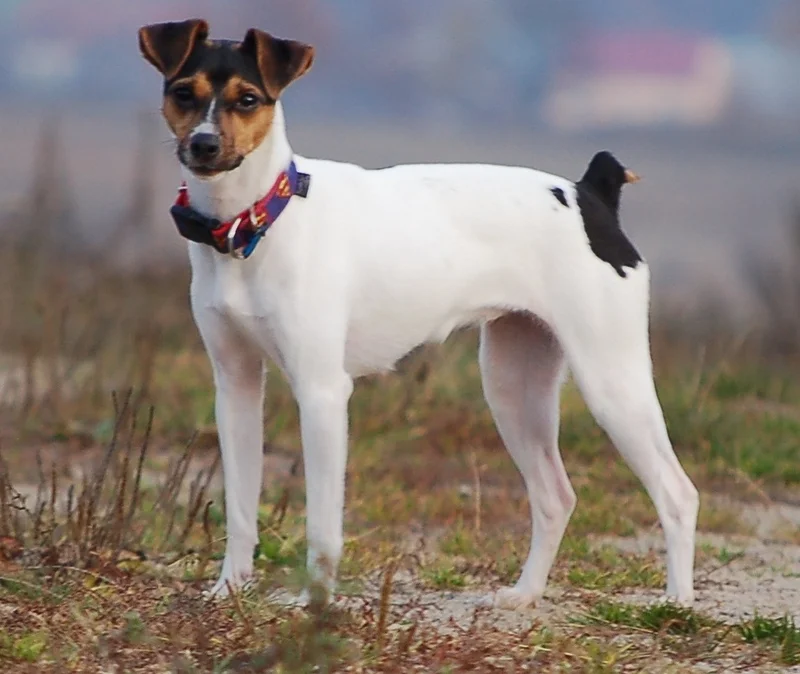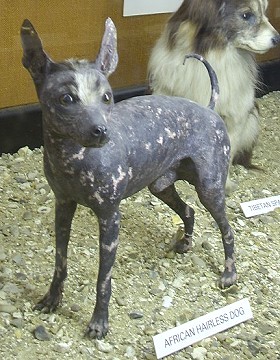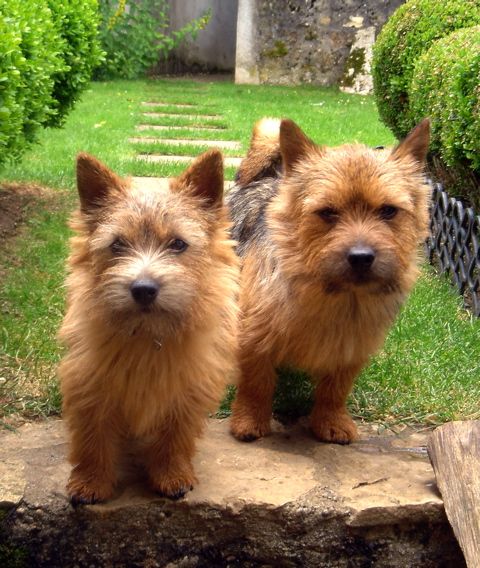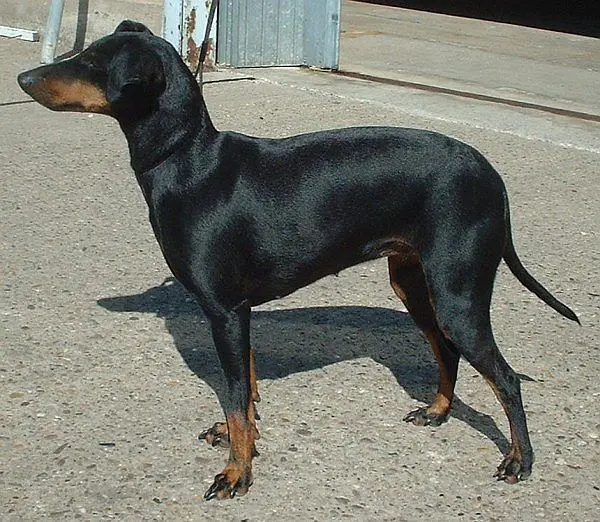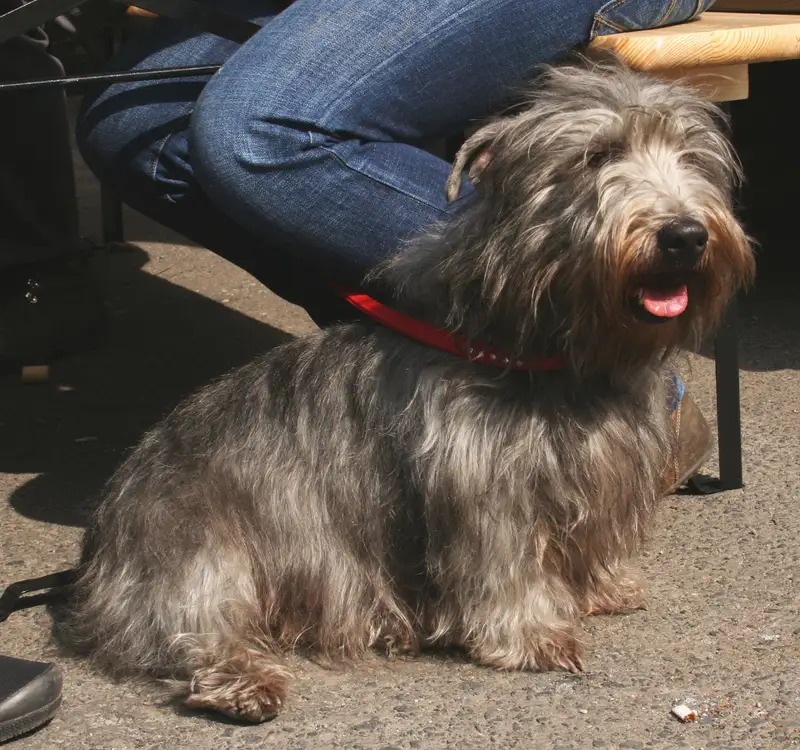Teddy Roosevelt Terrier
The Teddy Roosevelt Terrier is a small, energetic breed known for its hunting instincts and affectionate nature. With a playful demeanor and low grooming needs, they make excellent family companions.
Overview
🐕Breed Overview
✨Key Traits
💡What Makes Teddy Roosevelt Terrier Special
One of the standout traits of the Teddy Roosevelt Terrier is its intelligence, which makes them quick learners and eager to please. Their strong prey drive is another defining characteristic, leading them to chase after small animals and engage in playful antics.
They are also known for their affectionate nature, often forming strong bonds with their families and seeking companionship. Their versatility allows them to excel in various roles, from hunting and vermin control to being loving family pets.
This breed's playful demeanor and loyalty make them a delightful addition to any household.
The Teddy Roosevelt Terrier is a small to medium-sized American hunting terrier that has captured the hearts of many dog lovers. With a height ranging from 8 to 15 inches and a weight between 8 to 25 pounds, this breed is known for its muscular build and lively personality. Originally developed from various small terrier types brought to the United States by working-class English immigrants, the Teddy Roosevelt Terrier was bred for hunting and vermin control.
Their keen senses and agility made them excellent companions for farmers and urban dwellers alike. These dogs are characterized by their affectionate nature, playful demeanor, and strong desire to please their owners. They thrive on human companionship and are known to be loyal and protective, making them excellent watchdogs.
While they may be somewhat aloof with strangers, their friendly disposition towards family members and other pets is well-documented. Training a Teddy Roosevelt Terrier can be a delightful experience, as they are intelligent and eager to learn. However, they may exhibit some stubbornness, so consistent and positive reinforcement training methods are recommended.
Regular exercise is essential for this breed, as they require at least 30 to 60 minutes of physical activity each day to keep them happy and healthy. With a low grooming requirement, the Teddy Roosevelt Terrier's short coat is easy to maintain, requiring only occasional brushing to remove loose hair. Their average lifespan ranges from 12 to 16 years, making them a long-lived breed that can bring joy to families for many years.
In summary, the Teddy Roosevelt Terrier is a versatile and adaptable breed that excels in various roles, from hunting and vermin control to being a loving family companion. Their playful antics and affectionate nature make them a delightful addition to any household, whether in a rural setting or an urban apartment. If you're looking for a loyal and energetic companion, the Teddy Roosevelt Terrier may be the perfect fit for you.
🎉Fun Facts
Teddy Roosevelt Terriers are known for their agility and can excel in agility competitions.
The breed is named after Theodore Roosevelt, who was known for his love of small terriers.
They have a strong prey drive and may chase small animals, making them excellent vermin hunters.
Breed Characteristics
Family & Friends
Good Behavior
Get Up & Go
Household Harmony
Temperament & Personality
✨Key Traits
🐕Core Temperament
The Teddy Roosevelt Terrier is known for its friendly and intelligent temperament. They are generally good with children and other pets, displaying a playful and affectionate nature.
While they may be somewhat reserved with strangers, they are loyal and protective of their families. Their strong instincts as hunting terriers make them alert and aware of their surroundings, often barking to alert their owners of any potential intruders.
With proper training and socialization, they can be well-mannered companions.
💫Personality Profile
The Teddy Roosevelt Terrier is known for its lively and affectionate personality. They are loyal companions who thrive on human interaction and enjoy being part of family activities.
While they may be somewhat reserved with strangers, they are friendly and playful with family members and other pets. Their energetic nature makes them playful and fun-loving, often engaging in games and activities that stimulate their minds and bodies.
Despite their hunting background, they are adaptable and can settle down comfortably in a home environment, often curling up next to their owners after playtime.
🔊Vocal Tendencies
The Teddy Roosevelt Terrier has a moderate noise level. They may bark to alert their owners of strangers or unusual sounds, but they are not excessive barkers.
Their vocalizations can vary from playful barks during playtime to alert barks when they sense something unusual. Overall, they are not known for being overly noisy, making them suitable for apartment living as long as they receive adequate exercise and mental stimulation.
Affection & Social Traits
Energy & Activity
Communication Style
Care Requirements
🏃♂️Exercise Requirements
Daily Exercise
The Teddy Roosevelt Terrier requires a moderate amount of exercise to maintain its physical and mental well-being. Ideally, this breed should engage in at least 30 to 60 minutes of exercise each day, which can be broken down into several sessions. Activities such as brisk walks, playtime in the yard, and interactive games like fetch or tug-of-war are excellent for keeping them active.
Given their hunting background, they also enjoy activities that stimulate their prey drive, such as chasing after toys or participating in agility courses. Puppies may require shorter, more frequent play sessions, while older dogs may benefit from gentler activities to accommodate their energy levels. Regular exercise helps prevent obesity, reduces behavioral issues, and promotes overall happiness in this breed.
Insufficient exercise can lead to destructive behaviors, anxiety, and weight gain, making it essential for owners to prioritize their Teddy Roosevelt Terrier's activity needs.
Preferred Activities
🏠Living & Adaptability
Space Requirements
The Teddy Roosevelt Terrier is adaptable to various living environments, making it suitable for both apartments and homes with yards. However, they thrive best in spaces where they have room to move and play.
While they can live comfortably in smaller spaces, it is crucial to provide them with regular opportunities for outdoor exercise and mental stimulation. Owners in apartments should ensure daily walks and playtime in dog parks or open areas to meet their exercise needs.
The breed's size and energy level allow them to adjust well to urban living, but they should not be confined for long periods, as this can lead to boredom and behavioral issues.
Climate Preference
🍲Feeding Guide
Schedule
Food Types
Portion Size
Special Nutritional Needs
Teddy Roosevelt Terriers do not have specific dietary restrictions, but it is important to provide a balanced diet that meets their energy needs. High-quality dog food that is rich in protein and low in fillers is recommended.
Owners should monitor their dog's weight and adjust food portions accordingly to prevent obesity, which can lead to health issues. Regular vet check-ups can help identify any specific nutritional needs or sensitivities.
✨Grooming Requirements
Grooming Overview
The Teddy Roosevelt Terrier has a short, dense coat that requires minimal grooming. Regular brushing, approximately once a week, is sufficient to remove loose hair and keep the coat healthy.
Bathing should be done as needed, typically every few months or when the dog gets particularly dirty. Owners should also check their dog's ears regularly for wax buildup and clean them as necessary.
Nail trimming should be done every few weeks to prevent overgrowth. Overall, this breed is low-maintenance in terms of grooming, making them an ideal choice for busy families.
Care Schedule
Brush weekly; bathe as needed (every few months); trim nails every 2-4 weeks.
Health Profile
⚕️Health Care
Regular health care is crucial for the Teddy Roosevelt Terrier's lifespan. Routine veterinary check-ups, vaccinations, and preventive treatments can help detect health issues early and maintain overall well-being. Owners should also be proactive in managing their dog's health through proper nutrition, exercise, and dental care, which can contribute to a longer, healthier life.
Health Issues Overview
⏳Average Lifespan
Genetic Factors
Genetics significantly impact the Teddy Roosevelt Terrier's lifespan, with hereditary health issues potentially affecting their longevity. Responsible breeding practices that prioritize genetic diversity can help reduce the risk of inherited conditions. Prospective owners should seek reputable breeders who conduct health testing and provide transparency about the breed's lineage to ensure a healthy puppy.
Living Conditions
The Teddy Roosevelt Terrier's lifespan can be influenced by various environmental factors, including housing conditions, climate, and social interactions. Dogs living in supportive environments with regular exercise, mental stimulation, and socialization tend to live longer, healthier lives.
Exposure to extreme temperatures can affect their well-being, so it's essential to provide adequate shelter and care. Regular veterinary check-ups and preventive care also play a significant role in promoting longevity.
🏥Common Health Issues
Hip Dysplasia
Warning Signs
🔬Diagnosis
X-rays and physical examinations by a veterinarian.
💊Treatment
Medications, weight management, and in severe cases, surgery.
📝Management Tips
Maintain a healthy weight, provide regular exercise, and consult with a veterinarian for joint supplements if necessary.
Patellar Luxation
Warning Signs
🔬Diagnosis
Physical examination and X-rays.
💊Treatment
Surgical correction if severe.
📝Management Tips
Weight management and physical therapy can help; surgery may be required in severe cases.
Allergies
Warning Signs
🔬Diagnosis
Allergy testing and elimination diets.
💊Treatment
Medications and dietary changes.
📝Management Tips
Identify allergens and avoid exposure; consult a veterinarian for appropriate treatments.
🛡️Preventive Care
🔬Hip Evaluation
Evaluates the dog's hip joints for signs of dysplasia, which can lead to arthritis and mobility issues.
📅 Recommended for puppies and adults, especially those with a family history of hip problems.
🔬Patellar Evaluation
Tests for luxation of the kneecap, which can cause pain and mobility issues.
📅 Recommended for puppies and adults, especially those with a family history of patellar issues.
🔬Allergy Testing
Identifies potential allergies that may affect the dog's skin and overall health.
📅 As needed, especially if the dog shows signs of allergies.
Training
🧠Intelligence & Trainability
💪Work Drive
Teddy Roosevelt Terriers have a strong work drive, stemming from their history as hunting and utility dogs. They thrive when given tasks or jobs to do, whether it's participating in agility trials, hunting, or simply engaging in interactive play with their owners.
Providing mental stimulation through puzzle toys or training exercises is essential to keep them happy and fulfilled. Without sufficient engagement, they may become bored and exhibit undesirable behaviors.
Their high intelligence and eagerness to work make them well-suited for various canine sports and activities.
⚠️Training Considerations
Teddy Roosevelt Terriers may exhibit some behavioral challenges, particularly if they are not adequately socialized or trained from a young age. Common issues include stubbornness, which can make training a bit challenging, and a tendency to chase small animals due to their strong prey drive.
To overcome these challenges, consistent training methods that incorporate positive reinforcement are essential. Early socialization with various people, pets, and environments can help mitigate aloofness towards strangers and reduce any potential territorial behaviors.
Engaging them in mentally stimulating activities can also help curb any destructive tendencies that arise from boredom.
📝Training Tips
Training a Teddy Roosevelt Terrier can be enjoyable and rewarding, as they are intelligent and eager to please. Positive reinforcement techniques, such as treats and praise, work best for this breed. Start training early, focusing on basic commands like sit, stay, and come.
Incorporate fun activities like agility training or interactive games to keep them engaged. Consistency is key, so establish a routine and be patient. Socialization is crucial; expose them to different environments, people, and other animals to develop a well-rounded temperament.
Keep training sessions short and fun to maintain their interest and enthusiasm.
History & Heritage
📜Origin Story
The Teddy Roosevelt Terrier's origin story is intertwined with the history of American working dogs. S.
by English immigrants, these small terriers were essential for controlling vermin on farms and in urban areas. The breed's name honors Theodore Roosevelt, who was known for his love of dogs and his efforts to promote the usefulness of terriers in pest control.
Although Roosevelt did not own a Teddy Roosevelt Terrier, his family's association with small hunting dogs helped elevate the breed's status. The breed's development involved a mix of various terrier types, leading to the establishment of the Teddy Roosevelt Terrier as a distinct breed in the late 20th century.
⏳Development History
The Teddy Roosevelt Terrier's development can be traced back to the early 20th century when various small terrier breeds were brought to the United States by working-class English immigrants. These dogs, including Manchester Terriers, Smooth Fox Terriers, and Bull Terriers, were bred for their hunting abilities, particularly in vermin control.
Over time, two distinct types of Rat Terriers emerged: one with long legs and one with shorter legs. The shorter-legged variety was eventually recognized as the Teddy Roosevelt Terrier in the late 1990s, as breeders sought to establish a separate identity for this unique type.
The breed's history reflects a blend of various terrier traits, resulting in a versatile and adaptable companion.
🛡️Purpose & Historical Role
Originally bred for hunting and vermin control, the Teddy Roosevelt Terrier served as a practical working dog on farms and in urban settings. Their keen senses and agility made them excellent at catching rats and other small pests.
Over time, they evolved into beloved companions, maintaining their hunting instincts while also adapting to family life. Today, they are recognized for their versatility, excelling in various roles, including as watchdogs and loyal family pets.
🏺Cultural Significance
The Teddy Roosevelt Terrier, named after the 26th President of the United States, Theodore Roosevelt, holds a unique place in American canine history. Although Roosevelt himself did not own this specific breed, his fondness for small terriers and their role in vermin control in the White House contributed to the breed's popularity.
The breed symbolizes the hardworking spirit of early American immigrants who relied on these dogs for hunting and pest control on farms and in urban settings. The Teddy Roosevelt Terrier has become a beloved companion for many families, embodying loyalty, intelligence, and a playful demeanor.
Conservation Status
This breed is less common but has stable populations in certain regions.
